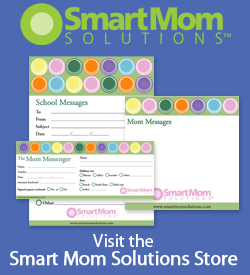By Ann Gatty
Overcoming conflict that happens in the workplace is one of the most frequent stress management questions I receive. So, I have a couple of useful conflict resolution ideas for you to try when communicating with challenging co-workers. If you have worked in an office setting, then you probably will recognize these staff members.
Consider the co-worker who has a never-ending list of problems at home and can’t seem to stop talking about them. Or the co-worker who has no interest in actually working, let alone finishing any projects on time. Or the co-worker who has all of the answers but can’t seem to find the ability to listen to anyone else’s suggestions—sending your joint project on a path to certain defeat. What’s a sensible person like you to do?
When stress levels go up in your workplace, communication skills often go down, causing higher levels of conflict and lower levels of efficient job performance. Quality communication—between and among people at all levels and every department and division—is the glue that holds organizations together. Sometimes it is helpful to reframe the way you are looking at a situation and try a different resolution strategy. Here are two strategies to employ to overcome conflict when drama levels are high and quality communication is struggling.
Use the G.O.O.D. approach
- Establish a Goal—If you and a co-worker find yourselves in a conflict situation, establish an agreed upon goal regarding what you are trying to accomplish.
- Determine the Obstacle—This is the secret to reaching your goal.
- List Your Options—Once you evaluate these, then decide which one you will try first.
- Direct Your Actions—Direct the actions you have agreed to take in order to reach the goal. You might try one set of options first, and if that approach doesn’t work, try a second set of options.
This is a workplace stress management strategy that keeps you being productive as you move forward and keeps you from becoming stuck in a quagmire of communication conflict. Establishing a common goal, acknowledging differences between you and a co-worker, suggesting an agreed upon collaborative action, and using supportive language can improve the chance that successful outcomes can be achieved. This workplace stress management strategy is one of the most effective ways to resolve conflict and move forward in a productive and healthy manner.
Use the FEED-FORWARD approach
Another strategy to assist in lowering the incidents of communication conflict and spiraling drama is to work productively in providing Feed-Forward comments about constructing positive changes for the future. This is more effective than simply providing feedback about reacting to what has happened in the past.
With Feed-Forward you can provide suggestions for the future that might help in achieving a positive change in a selected behavior rather than dwelling on what has happened in the past. Marshall Goldsmith has used this strategy in many organizations, and it seems like a great tool for workplace stress management. We can change the future. We can’t change the past. Feed-Forward helps people envision and focus on a positive future, not a failed past.
And no matter what—stay positive!
Keep an accomplishment list so that you can reward yourself for what you have achieved even if others don’t seem to notice. Also when you keep a perspective of where work falls in your life priorities, you will not allow yourself to get too caught up in the workplace drama. Being optimistic about your life as it relates to your work is a great workplace stress management strategy. Consider your priorities to be found in what you do outside of work as well. Don’t let co-worker conflicts become something that brings you down.
Dr. Ann Gatty coaches individuals in stress management strategies and building life transitions. She coaches women in finding a life balance between professional and personal responsibilities. Visit her website, Stress-Management-4-Women.com, to learn more about stress management in the workplace.


